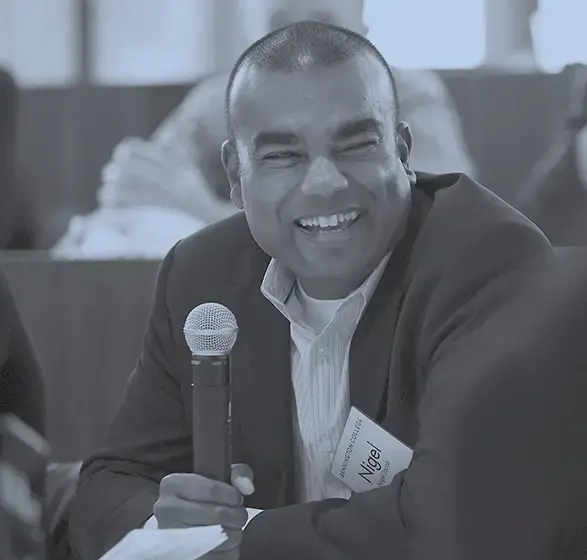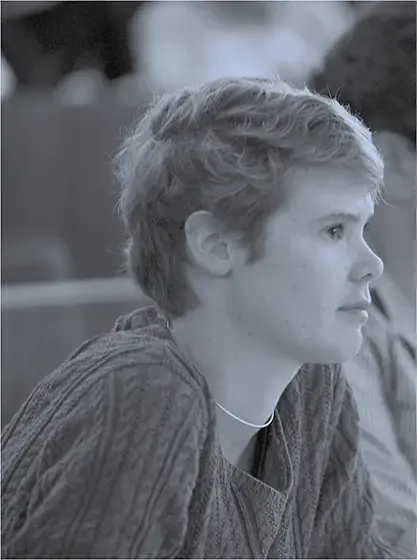Working With Unknowns
How one Bennington intern stunned the Boston Mayor’s office.


Claire Barber is not a public administration student, she is not studying information technology (exclusively), and she is not a mediator, yet she drew on all of these skills working with the Office of New Urban Mechanics during her sophomore Field Work Term. Claire sees the foundation of these skills coming from her work in the visual arts, which is the focus of her Plan. “I took a course, Foundations in Spatial Thinking and Forming, that reinforced the interconnectedness of my work. We had to complete four projects working with cardboard, metal, and clay. Some of our assignments included building a structure that would support you or creating an apparatus that would move you from one place to another.
Each assignment required me to really think about how my body interacts with spaces and to carefully consider the movements I made every day. I had to pay attention to things you wouldn’t normally pay close attention to: What really holds me up in the course of a day? What qualities do these structures embody? What do the structures look like? What do they really need in order to work? I was forced to substantially heighten my sensitivity to what was happening around me, how I related to space, what structures were about. And that relates to my work with Code for America and the Boston Mayor’s Office for New Urban Mechanics. The skills I have gained through my work in the visual arts has informed my understanding of the way governments work. When you consider that government has so many agencies, many different partners, and many people coming from different backgrounds, experiences, approaching work differently and that all of these different elements need to come together in order for government to work, you might see how honing in on key questions, being observant, considering structures, needs, and reconsidering what you take in every day is valuable in the situation. My work in the visual arts was instrumental in allowing me to step back and look at what was successful and what was not, where the pain points were. I was comfortable thinking about how I could change something in one area to get a better result in another area and thinking about how I could help two people or different agencies work together.”
Graduates from some of the country’s most revered institutions surround me, but I would hire a Bennington student again in a heartbeat.
“A couple of years ago the Boston Mayor’s Office got together with a nonprofit called Code for America (CFA). The organization was created to site smart, young technologists and entrepreneurs to tackle problems facingcities. We presented our team with a tough challenge—build tools that would address needs that community members had around connecting to educational learning opportunities in Boston. We didn’t know what that would look like, but we knew that there was a desire for these tools.
“When you think about a project like this it became clear that what we needed was an ethnographer who could serve as an interpreter—someone who could interview families, capture what was working with the process and what was not, someone who could advise us how to improve, someone who had the capacity to think in general about how communities could solve problems. That is where Claire Barber came in.
“Claire was way beyond what we expected. In truth, we expected that she would support the project manager, who was a master’s in public administration graduate, but it turned out that we saw an entirely different experience unfold. Claire would improvise, deal with things as they happened, produce and communicate on the fly, she would jump in and collaborate with many different teams and constituents—and she was totally comfortable in this arena. Whereas our project manager was so accustomed to having well-defined problems, she found working with unknowns to be a real challenge.
“I have spent a long time working in industry and in government, and it’s a rare thing when you find someone who has this combination of abilities; it’s rare to find true collaborators, and especially so within young people, because, for the most part, they work on projects in isolation. It was clear that was not the case with Claire—she was accustomed to collaboration across all fields.
“We were totally blown away. We wanted her to stay longer. And although personality has a lot to do with it, it’s clear that the Bennington model builds these skills. Graduates from some of the country’s most revered institutions surround me, but I would hire a Bennington student again in a heartbeat.”
—Nigel Jacob, co-founder of the Boston Mayor’s Office for New Urban Mechanics. Following Jacob’s experience working with sophomore Claire Barber and talking with other Bennington students during campus visits, he developed three Field Work Term positions for Bennington students at the Mayor’s Office for New Urban Mechanics.